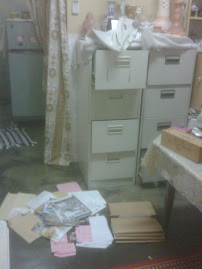THE HO HUP LEGAL TUSSLE
Court of Appeal: Vincent Lye’s
JDA ‘sound commercial deal’
KUALA LUMPUR ( May 16):
The Federal Court will be hearing Ho Hup’s application for leave to appeal
against the Court of Appeal’s decision tomorrow in the wake of the appellate
court’s view that the Joint Development Agreement masterminded by the former
deputy executive chairman of the construction giant Vincent Lye was a sound
commercial deal.
The JDA was designed
for Bukit Jalil Development (BJD) as it could afford BJD a minimum guarantee
entitlement of RM265 million, whatever the outcome of the development.
The legal dispute
revolves around this JDA on a 60-acre plot of land in Bukit Jalil which was
signed by Vincent who led the previous board of director in March 2010 between
Ho Hup’s subsidiary BJD and a Malton Group company Pioneer Haven Sdn Bhd.
The Court of Appeal on
Feb 27 this year, overturned an earlier decision by the High Court which had
prohibited the company from carrying out its plans on the disputed parcel of
land.
The Court of Appeal
shed greater light on the JDA stating that it was a joint venture between
Pioneer Haven and Bukit Jalil and not a sale of land as was suggested by Ho Hup
and that it was on common ground that BJD continued to be the legal and beneficial
owner of the land.
It was also read that
there was ‘no transfer of ownership of the land to Pioneer Haven which was not
entitled to charge the land and that it was a company unrelated to Bukit Jalil.
“The JDA is a
commercial arms-length transaction entered into a bona fide,” read the Court of
Appeal ruling.
Malton Group is
controlled by influential businessman Datuk Desmond Lim and the new board of Ho
Hup which took over from Vincent Lye is backed by Datuk Low Tuck Choy.
Industry analysts,
when approached appeared to be puzzled as to why the JDA which was the only
option and bail out for the PN17 status construction giant was cast away by the
new board succeeding Vincent Lye.
One analyst who is
well read on the issue and the details of the JDA, said that the JDA was air-tight
in favour of BJD as Pioneer Haven would be solely funding the entire cost of
developing the land in addition to the latter not being entitled to charge the
land for the purpose of securing financing for the development.
Moreover, the analyst
said that BJD was not required to contribute any funds towards the development
of the land as land owner under the JDA and in actual terms the agreement was
17 per cent of RM2.5 billion gross
development value (GDV) which works out
to RM425 million.
Irrespective of the
commercial risks associated with the development, the analyst said that BJD
stood to receive a minimum guaranteed entitlement of RM265 million from the
project.
“What is common
ground is that at all material times, Bukit Jalil continues to be the legal and
beneficial owner as there was no transfer of ownership of the land whether
pursuant to the JDA or otherwise.”
The JDA was approved
by the then existing and authorised board of directors comprising Datuk Vincent
, the group managing director Lim Ching Choy
In the Court of
Appeal’s judgement, the question of Ho Hup’s locus standi was also highlighting raising the question as to
whether Ho Hup was the proper plaintiff and that it was not entitled to sue in
its own right as the JDA did not amount to a disposal and that the directors of
Ho Hup can only restrain were those if at all they were directors of BJD only
and not of Ho Hup itself as the asset was BJD’s land.
Industry observers
opined that Ho Hup under Vincent’s tenure, had to comply with the deadline for
submission of their regularisation plan to Bursa by April 4, 2012 in order to
avoid a de-listing under PN17.
“Ho Hup and BJD had
to show that as part of their
regularisation plan, they have the necessary funding to develop the land in
order to meet the Bursa requirement in order to eliminate the accumulated
losses of RM110 million,” said one observer.
He said that
obviously, there was a need to make timely repayments of outstanding loans with
the banks.
Ho Hup had outstanding
loans of RM101.10 million with banks and both Ho Hup and BJD had defaulted in
their obligations to CIMB which held a charge over the land.
It is reliably learnt
that CIMB had rejected proposals to reschedule repayments of the loans and was
about to commence foreclosure proceedings of the land.
Moreover what adds
strength to the position of Pioneer Haven being in a better position to
undertake the JDA is the suit brought against Ho Hup and BJD by Zen Courts Sdn
Bhd as recently as March 27, 2012 seeking Ho Hup to buy out all the shares held
by Zen Courts in BJD failing which action would be taken to proceed with a
winding-up.
The JDA plan was
Vincent’s way out given the fact that the Ho Hup board in their financial year
ending 2007 and 2008 accounts filed solvency declarations that the company
would be able to pay all its debts within 12 months from the announcement. This
is besides the PN17 conditions that required Ho Hup to also secure funds to
repay bankers under the PN 17 solvency declarations.


.jpg)
.jpg)




























